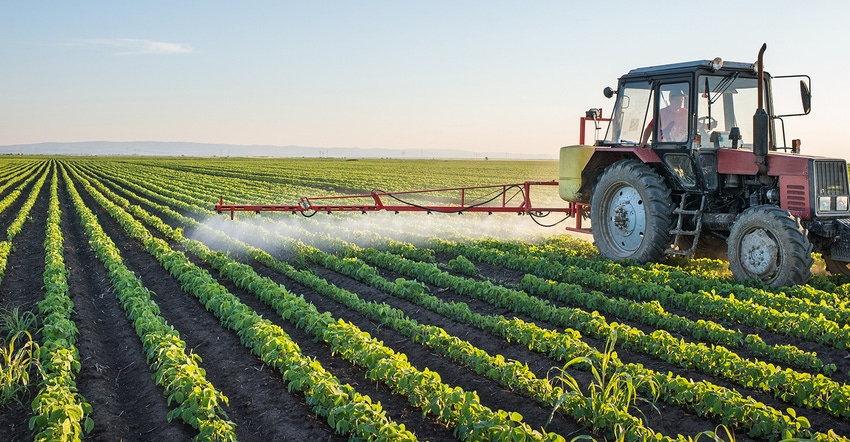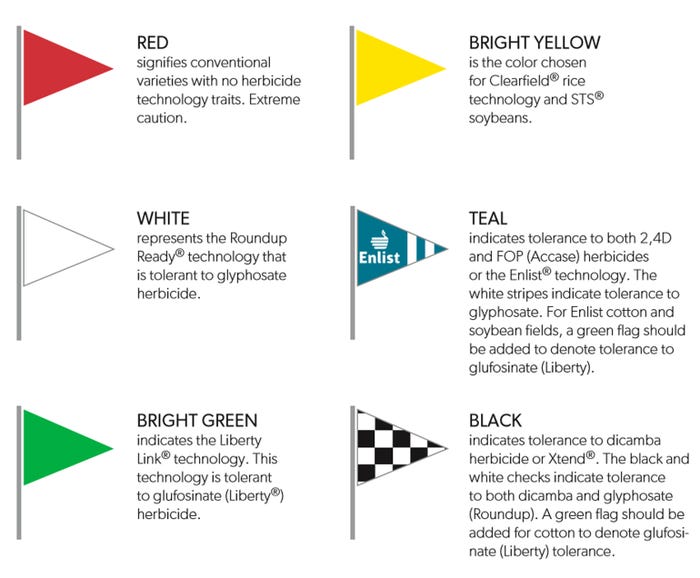
Flags may be popping up across crop fields this spring as farmers and applicators try to reduce errors with herbicide application.
Two new herbicide resistance technologies are on the market for use in cotton, corn and soybean fields, and it is important that farmers know which fields are safe for application of the new products and which are sensitive to them.
The "Flag the Technology" program originated in Arkansas as a system to helps farmers identify fields that are safe for application, and those to avoid in an effort to prevent unintentional damage to the producer's field or to adjacent crops. Farmers place colored flags at entry points on fields, with each flag color representing a different kind of technology. This makes herbicide applicators aware which products are appropriate and safe to use on a specific field.
The system is gaining popularity in the Midwest.
Already this year, MFA Inc. alerted its customers that it would participate in the program. According to the company's director of agronomy, Jason Weirich, MFA will provide black-and-white-checked flags with its MorSoy RXT soybeans. The black and white flag indicates a tolerance to both dicamba and glyphosate. "We ask that you place these flags in the RXT fields to not only remind you what is planted in that field, but also to make your neighbors aware," Weirich says. "This will hopefully avoid misapplication of chemicals or drift on your field."
According to University of Missouri Extension weed scientist Kevin Bradley, the flags help to assure applicators and farmers that they have the right chemical in their tank to match the traits in that field. He says the flags make it easy to look at fields across the road — and if there are different-colored flags in nearby fields, then applicators may think twice before spraying in windy conditions.
The following are the flag colors and their uses:

More information on the Flag the Technology program can be found at the University of Arkansas Extension.
About the Author(s)
You May Also Like






